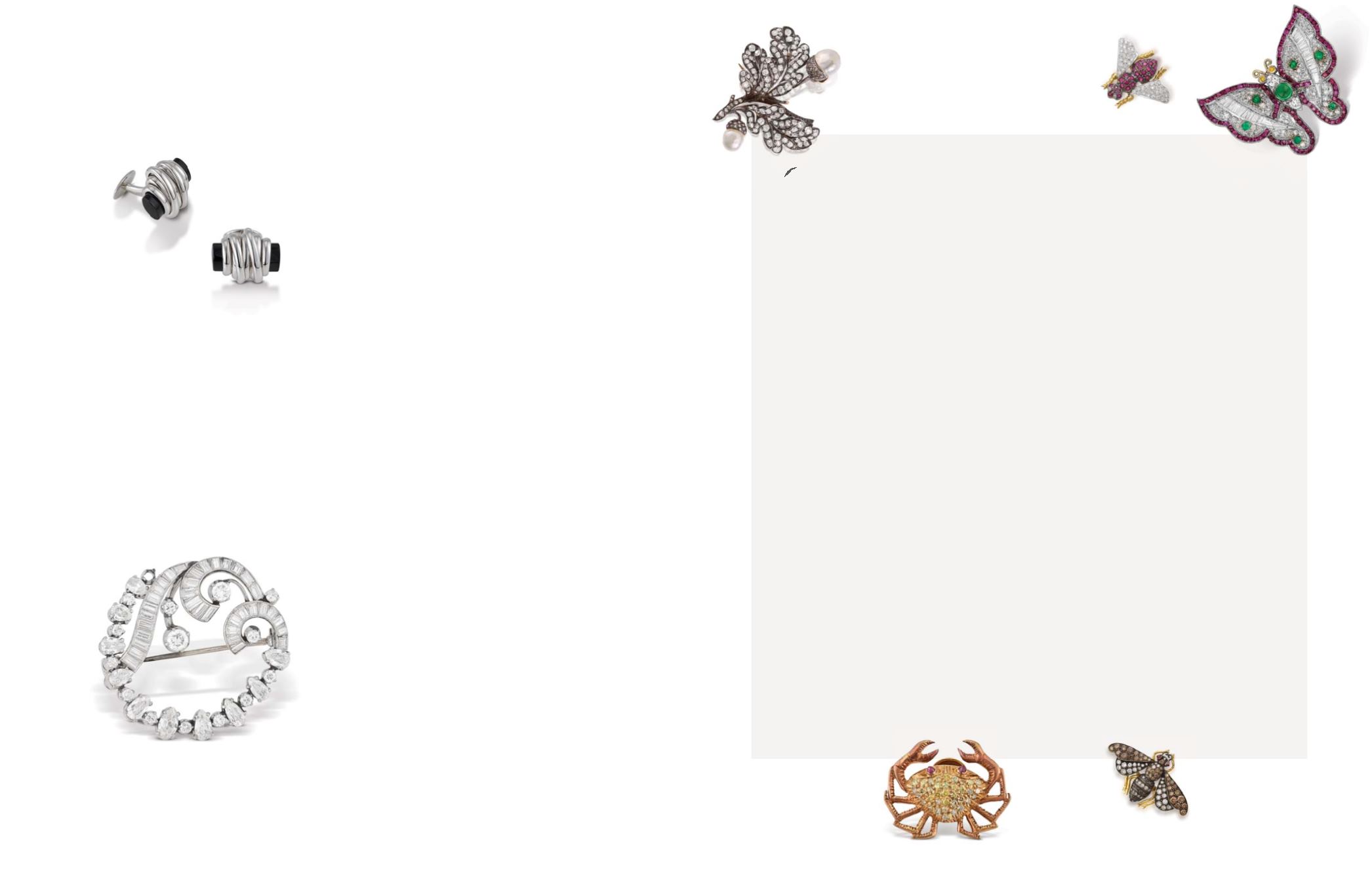

124
125
O
ne of the earliest forms of jewellery, brooches began as simple functional pins – sometimes
called fibulae – to hold garments together. The evolution of the brooch into an accessory
and ornament closely mirrored the sociopolitical and economic contexts of each decade. Metal
pins first appeared in the Bronze age, and gradually became more decorative and visible,
used to fasten cloaks and scarves. During the 16
th
and 17
th
centuries, jewellery began to be
associated with status, and accordingly, pins featured precious metals, gemstones, carvings
and more intricate designs.
The Victorian era was dominated by Naturalism in art, reflected in brooch designs primarily
inspired by nature, featuring accurate renditions of flowers, birds and insects. Ornate, delicate
designs, including feminine motifs such as bows and ribbons, continued until the early 1900s;
and Indian craftsmen often altered these motifs and techniques, drawing on “a strong indigenous
tradition” which “metamorphosed into a new style by 1851, often depicting roses, hearts and
crosses.” (Nick Barnard,
Indian Jewellery: The V&A Collection
, London: V&A Publishing,
2008, p. 80)
After the First World War, there was a shift to more geometric, strong and streamlined Art Deco
designs. “What women were wearing impacted the way brooches were worn at any given time in
history. But the social and historical context matters too. If you look back to the history, women
were actually becoming more powerful in society and in politics. Even jewellery reflects this
social development, and designs became stronger and a little bit more masculine.” (Kate Springer,
“The Brooch is Back: But Where Did They Come From?”
Hong Kong Tatler
,
hk.asiatatler.com,2017, online)
The production of jewellery was limited during the SecondWorldWar due to economic constraints
and a lack of resources, but brooch designs in the Post-War period saw a resurgence in the form of
a diamond cascade, featuring a flexible joint that allowed freedom of movement. Nature motifs,
with whimsical interpretations and meticulous detail, continued to remain a constant. Materials
and cultural elements – such as coloured stones, gold settings and motifs from the Middle East –
came into the spotlight in turn, indicating wider economic and political shifts globally.
Contemporary brooches continue to experiment with design, style and materials. They are often
created with lighter metals such as titanium and wood, which can be worn on textiles such as silk,
satin and chiffon. Increasingly flexible and functional, brooches accentuate and add significance
to any outfit.
164
ONYX ‘ALLEGRA TOI & MOI’
CUFFLINKS BY DE GRISOGONO
Each designed as a carved onyx wrapped with thick
gold wires. With maker’s marks and stamped ‘Au 750’.
Onyx: 15.50 carats
Gross weight: 20.24 grams
$ 2,145 ‒ 3,575
Rs 1,50,000 ‒ 2,50,000
165
DIAMOND BROOCH
Designed as a scrolling motif set with rectangular step‒
cut, round and pear‒shaped diamonds, mounted in
gold.
Gross weight: 5.95 grams
$ 4,290 ‒ 5,715
Rs 3,00,000 ‒ 4,00,000


















